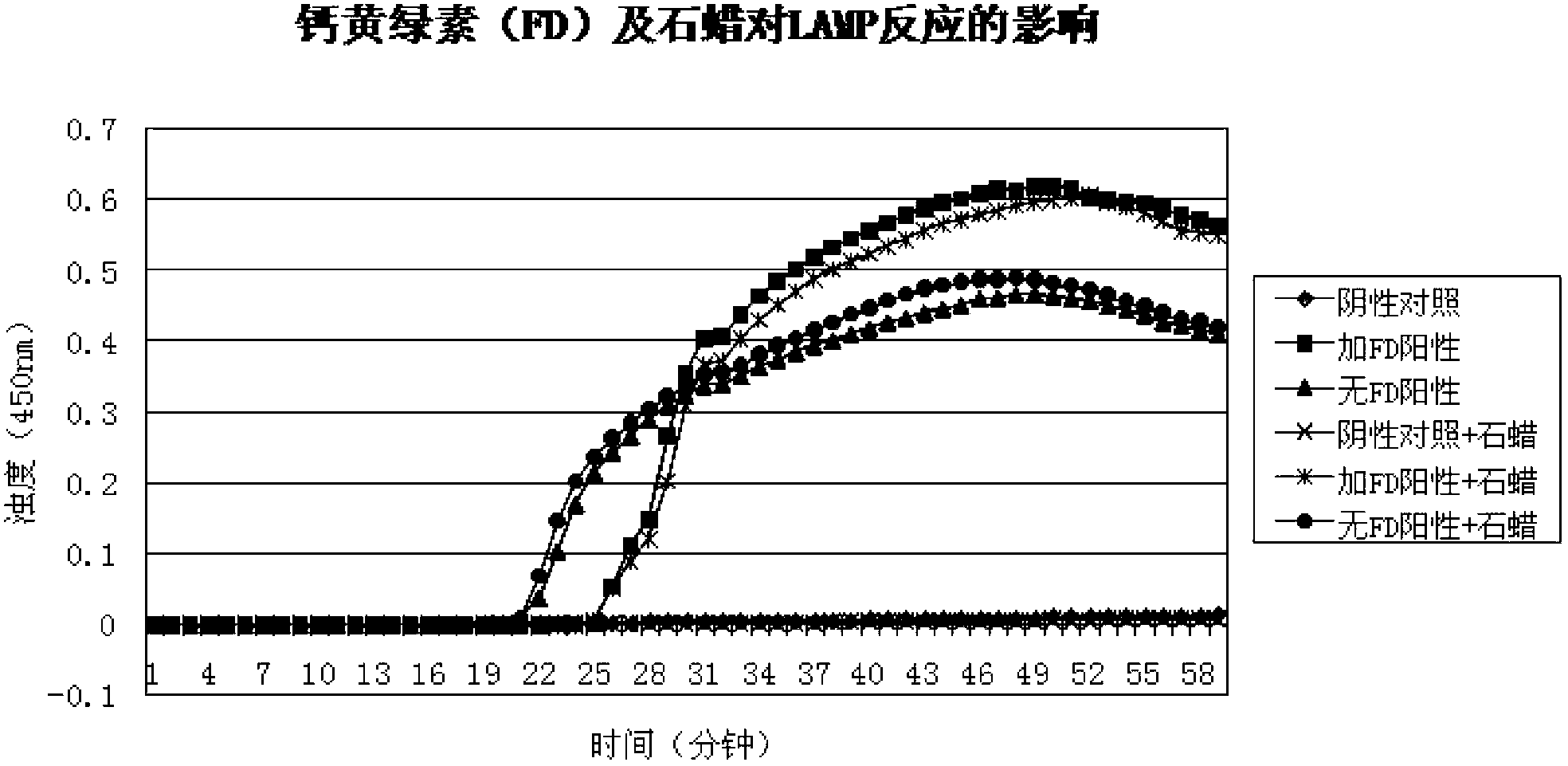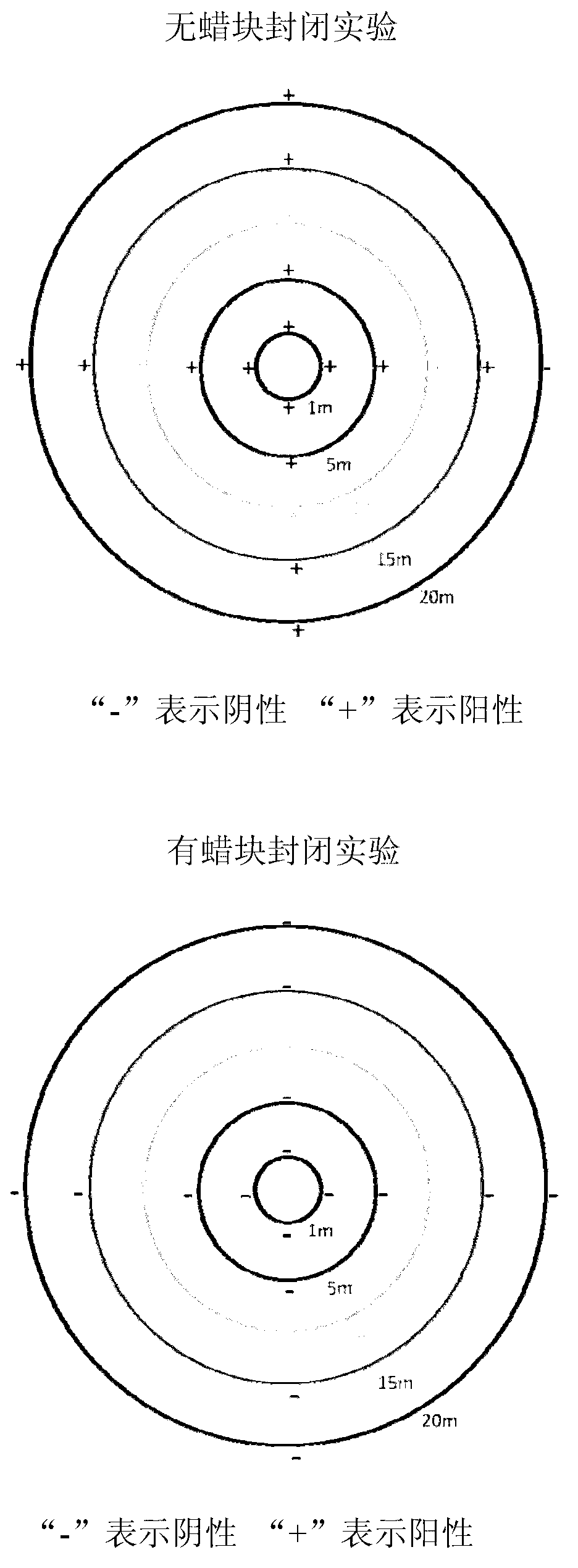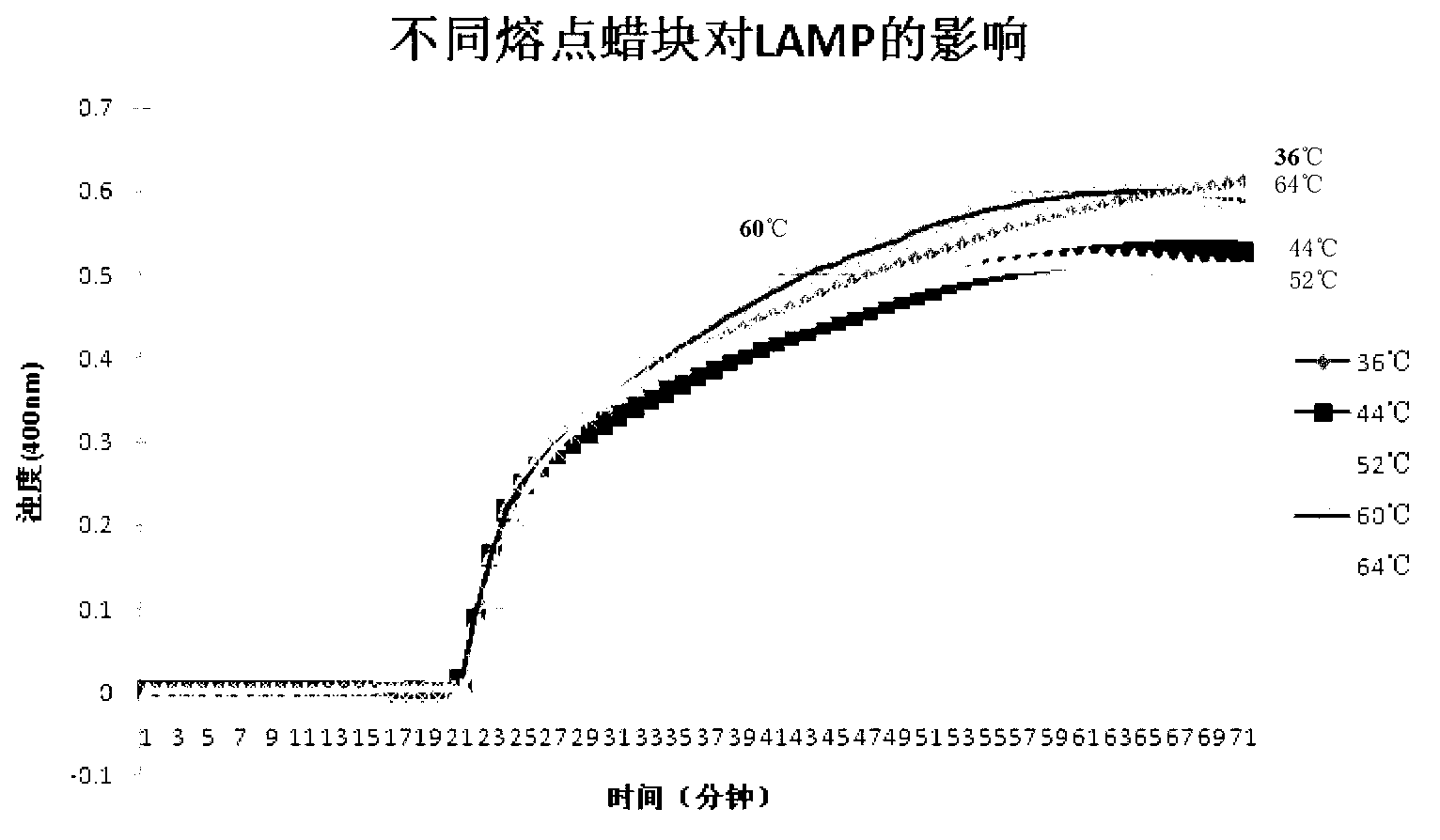Method for preventing nucleic acid contamination and indicating reaction result in nucleic acid isothermal amplification reaction
A constant-temperature amplification and nucleic acid technology, which is applied to the molecular biology detection of nucleic acid, prevents nucleic acid contamination and indicates reaction results. A wide range of applications, the effect of preventing false positives
- Summary
- Abstract
- Description
- Claims
- Application Information
AI Technical Summary
Problems solved by technology
Method used
Image
Examples
experiment example 1
[0056] Experimental example 1. Detect whether the paraffin block and indicator (calcein FD) inhibit the LAMP reaction
[0057] To detect whether the paraffin block inhibits the LAMP reaction, the specific experimental method includes the following steps:
[0058] 1) Melt semi-refined solid paraffin (or fully refined solid paraffin) with a melting point of 42°C (40-60°C is acceptable), introduce it into a mold, then cool down to make it solidify, and make the paraffin suitable for the size of the reaction tube (diameter and columnar solid paraffin block with the same diameter as the reaction tube;
[0059] 2) The experiment is divided into six groups: negative control group (paraffin and calcein are not added, negative means that the template of LAMP reaction is double distilled water, which is for quality control, to ensure that the operation process and primers are not contaminated), plus FD positive group ( Add calcein, positive means that the template of LAMP reaction is t...
experiment example 2
[0063] Experimental Example 2. Using two different sets of LAMP primers to verify the blocking effect of paraffin blocks
[0064] Use two different sets of LAMP primers to verify the blocking effect of the paraffin block. The specific experimental method includes the following steps:
[0065] 1) Melt semi-refined solid paraffin (or fully refined solid paraffin) with a melting point of 42°C (40-60°C is acceptable), introduce it into a mold, cool down to make it solidify, and make the paraffin suitable for the size of the reaction tube (diameter and columnar solid paraffin block with the same diameter as the reaction tube;
[0066] 2) Experiments were divided into four groups: primer 1 plus paraffin group (primer 1 and paraffin added), primer 1 without paraffin group (primer 1 and paraffin added), primer 2 plus paraffin group (primer 2 and paraffin added), primer 2 No paraffin group (add primer 2 and paraffin);
[0067] 3) Add the reaction solution into the reaction tube. The ...
experiment example 3
[0070] Experimental example 3, the influence of different melting point paraffins on LAMP reaction
[0071] Detect the impact of different melting point paraffins on the LAMP reaction, the specific experimental method comprises the following steps:
[0072] 1) Melt semi-refined solid paraffins with different melting points (36°C, 44°C, 52°C, 60°C, 64°C) and introduce them into the mold respectively, then lower the temperature to make them solidify, and make the paraffin wax suitable for the size of the reaction tube (diameter and columnar solid paraffin block with the same diameter as the reaction tube;
[0073] 2) The experiment was divided into five groups according to the different melting points of paraffin: 36°C paraffin group (adding paraffin with a melting point of 36°C), 44°C paraffin group (adding paraffin with a melting point of 44°C), 52°C paraffin group (adding a melting point of 52 ℃ paraffin), 60 ℃ paraffin group (adding paraffin with a melting point of 60 ℃), 6...
PUM
| Property | Measurement | Unit |
|---|---|---|
| Melting point | aaaaa | aaaaa |
Abstract
Description
Claims
Application Information
 Login to View More
Login to View More - R&D
- Intellectual Property
- Life Sciences
- Materials
- Tech Scout
- Unparalleled Data Quality
- Higher Quality Content
- 60% Fewer Hallucinations
Browse by: Latest US Patents, China's latest patents, Technical Efficacy Thesaurus, Application Domain, Technology Topic, Popular Technical Reports.
© 2025 PatSnap. All rights reserved.Legal|Privacy policy|Modern Slavery Act Transparency Statement|Sitemap|About US| Contact US: help@patsnap.com



